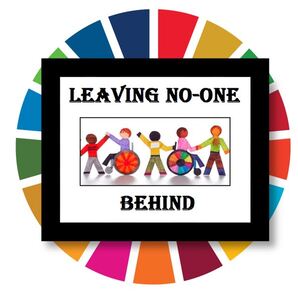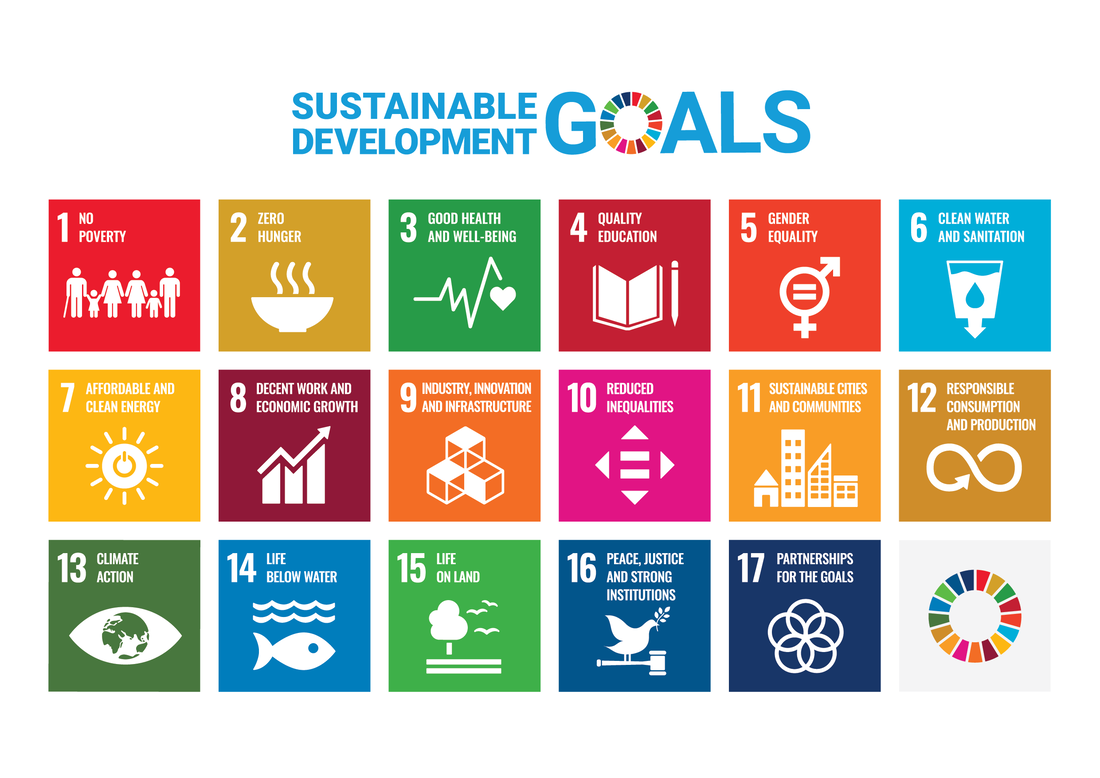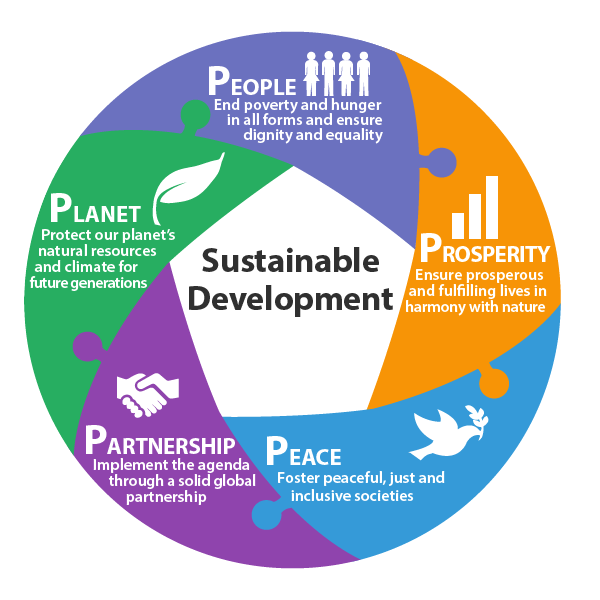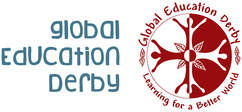What sort of a world do we want to live in? How can we make the world a better place for everyone? How can we balance the needs of people and the planet? How do we learn to live well together? These may appear to be simple questions on the surface, but the demands of living on planet earth are extremely complex in real life circumstances.
The Sustainable Development Goals (SDGs) were agreed by the countries belonging to the United Nations, in September 2015, as a blueprint towards working towards a more sustainable future. There are 17 goals, each goal underpinned by 169 detailed targets, designed to support governments work towards meeting these targets by 2030.
United Nations Thailand explain the goals in the video below:
The Sustainable Development Goals (SDGs) were agreed by the countries belonging to the United Nations, in September 2015, as a blueprint towards working towards a more sustainable future. There are 17 goals, each goal underpinned by 169 detailed targets, designed to support governments work towards meeting these targets by 2030.
United Nations Thailand explain the goals in the video below:
Schools around the world are also finding the SDGs a useful tool, as they seek to create a curriculum aligned with their school values and desire to motivate students, connect learning with real world contexts and contributing to the wider community.
Take a look at the 17 goals and consider where your school is already addressing these targets, both within and beyond the curriculum. Think about your school policies and notice where they link in and overlap with the global goals for sustainable development. They are your goals too!
Take a look at the 17 goals and consider where your school is already addressing these targets, both within and beyond the curriculum. Think about your school policies and notice where they link in and overlap with the global goals for sustainable development. They are your goals too!
The goals are far-ranging, from the need to eradicate poverty and hunger, reduce inequalities and protect the planet from further damage and degradation. The 17 goals can be summarized in what are called the 5 P’s. This is another way to visualize the goals and make them more accessible. Collaboration, cooperation and interdependence will be key to improving sustainable development, so why not explore where the individual goals fit within the 5 P’s framework?
The Sustainable Development Goals take an ambitious and holistic approach to tackling the myriad of complex issues facing the world. Working towards the goals is not mandatory, but increasingly it is acknowledged that an urgent response is needed for the benefit of all, especially future generations who inherit the results of the decisions we make today.
The responsibility to meet the goals by 2030 is shared across the world, with a recognition that, often, it is the poorest who are most deeply affected by the impact of climate change, pandemics, drought, economic breakdown, environmental degradation or conflict. A greater awareness is needed that everyone has a part to play – politicians, industrialists, employers, scientists, consumers, educators, campaigners, families – as the 17 goals are interdependent, so are we.
It is tempting to become overwhelmed and feel daunted by tackling the big issues behind sustainable development. This is the case for adults and children alike and climate anxiety is becoming a growing phenomenon. Of course, this is a concern for schools, as poor mental and emotional health undermines our ability to learn and function well.
It is widely recognized that being supported to take social action, locally, is a positive response to tackling feelings of stress and worry. As well as learning about global issues, young people need to be helped to identify their own values and strengths, recognize their influence upon those around them, and appreciate the importance of taking action individually and in partnership with their peers. They need to develop the self-awareness and skills to begin to work towards making a difference.
Many small actions can create a chain reaction and, ultimately, are more likely to be sustainable. The responsibility for meeting the global goals for sustainable development does not rest on the shoulders of young people. However, they can make their voices heard and influence others around them to make changes too.
The responsibility to meet the goals by 2030 is shared across the world, with a recognition that, often, it is the poorest who are most deeply affected by the impact of climate change, pandemics, drought, economic breakdown, environmental degradation or conflict. A greater awareness is needed that everyone has a part to play – politicians, industrialists, employers, scientists, consumers, educators, campaigners, families – as the 17 goals are interdependent, so are we.
It is tempting to become overwhelmed and feel daunted by tackling the big issues behind sustainable development. This is the case for adults and children alike and climate anxiety is becoming a growing phenomenon. Of course, this is a concern for schools, as poor mental and emotional health undermines our ability to learn and function well.
It is widely recognized that being supported to take social action, locally, is a positive response to tackling feelings of stress and worry. As well as learning about global issues, young people need to be helped to identify their own values and strengths, recognize their influence upon those around them, and appreciate the importance of taking action individually and in partnership with their peers. They need to develop the self-awareness and skills to begin to work towards making a difference.
Many small actions can create a chain reaction and, ultimately, are more likely to be sustainable. The responsibility for meeting the global goals for sustainable development does not rest on the shoulders of young people. However, they can make their voices heard and influence others around them to make changes too.
Useful resources for the classroom:
Printable SDG display materials (Practical Action)
Global goals display materials - Practical Action
Photographs of women and girls all over the world illustrating each of the 17 SDGs
www.theguardian.com/global-development-professionals-network/gallery/2016/jul/07/a-girls-view-of-the-17-sustainable-development-goals-in-pictures
The World’s Largest Lesson: The World's Largest Lesson (globalgoals.org)
Printable SDG display materials (Practical Action)
Global goals display materials - Practical Action
Photographs of women and girls all over the world illustrating each of the 17 SDGs
www.theguardian.com/global-development-professionals-network/gallery/2016/jul/07/a-girls-view-of-the-17-sustainable-development-goals-in-pictures
The World’s Largest Lesson: The World's Largest Lesson (globalgoals.org)
Further Reading:
United Nations: 17 Goals to Transform Our World
https://www.un.org/en/climatechange/17-goals-to-transform-our-world
Oxfam: The Sustainable Development Goals: A guide for teachers: The Sustainable Development Goals: A guide for teachers - Oxfam Policy & Practice
UNESCO SDGs Learning Objectives: Education for Sustainable Development Goals: learning objectives - UNESCO Digital Library
Practical Action - Sustainable Development Goals article: Sustainable Development Goals - Practical Action
World Bank SDG data 2020: datatopics.worldbank.org/sdgatlas/
United Nations: 17 Goals to Transform Our World
https://www.un.org/en/climatechange/17-goals-to-transform-our-world
Oxfam: The Sustainable Development Goals: A guide for teachers: The Sustainable Development Goals: A guide for teachers - Oxfam Policy & Practice
UNESCO SDGs Learning Objectives: Education for Sustainable Development Goals: learning objectives - UNESCO Digital Library
Practical Action - Sustainable Development Goals article: Sustainable Development Goals - Practical Action
World Bank SDG data 2020: datatopics.worldbank.org/sdgatlas/





